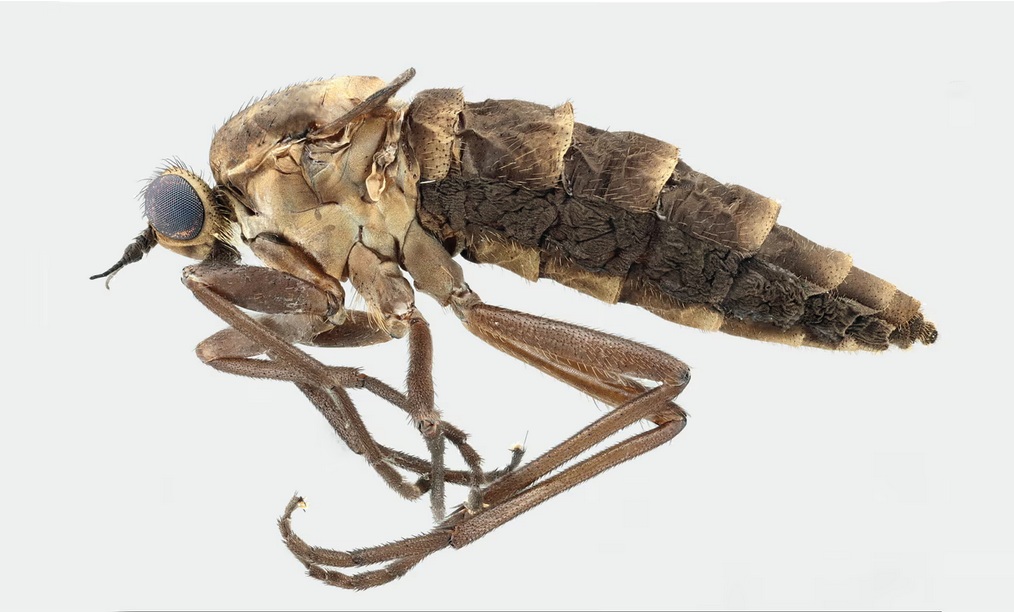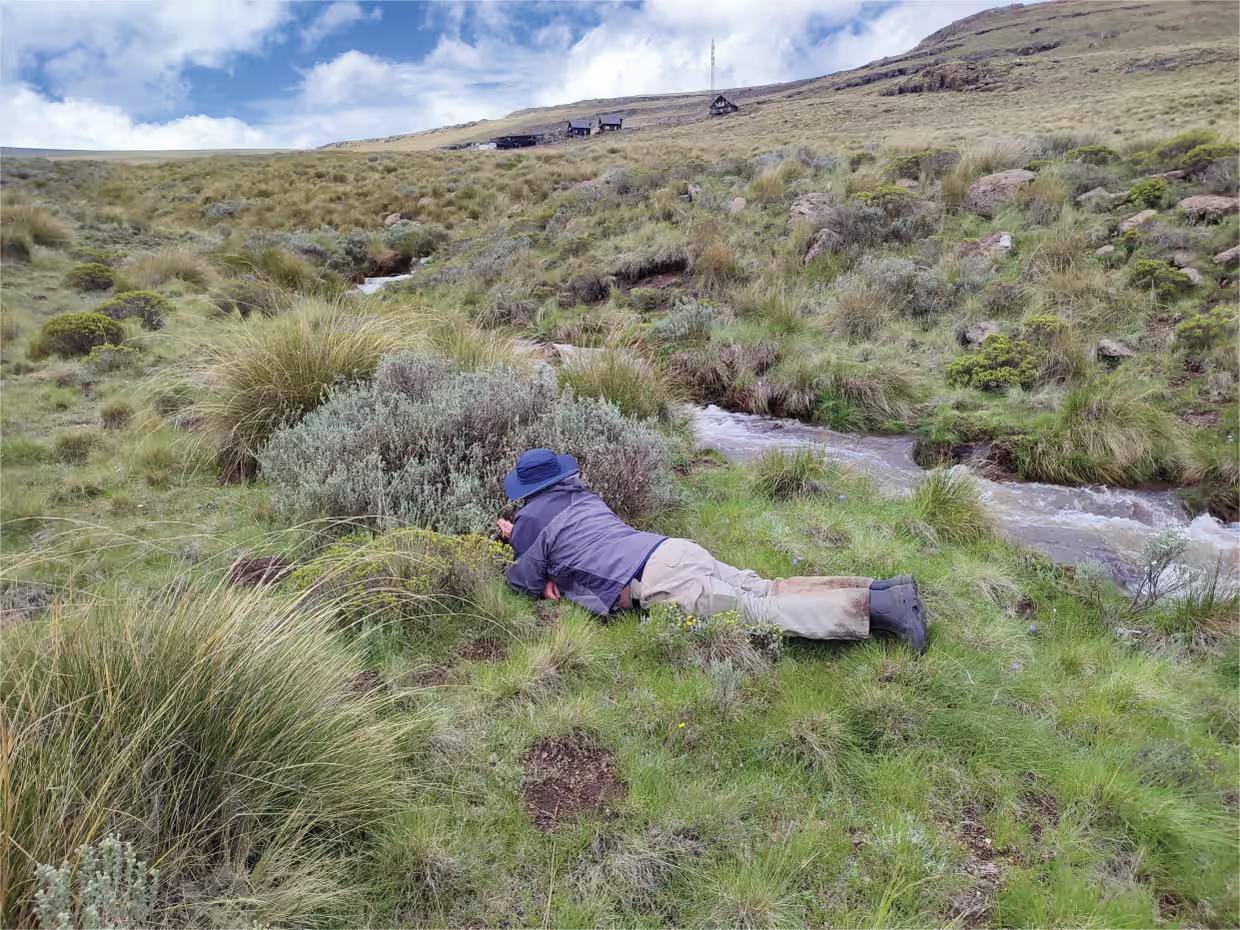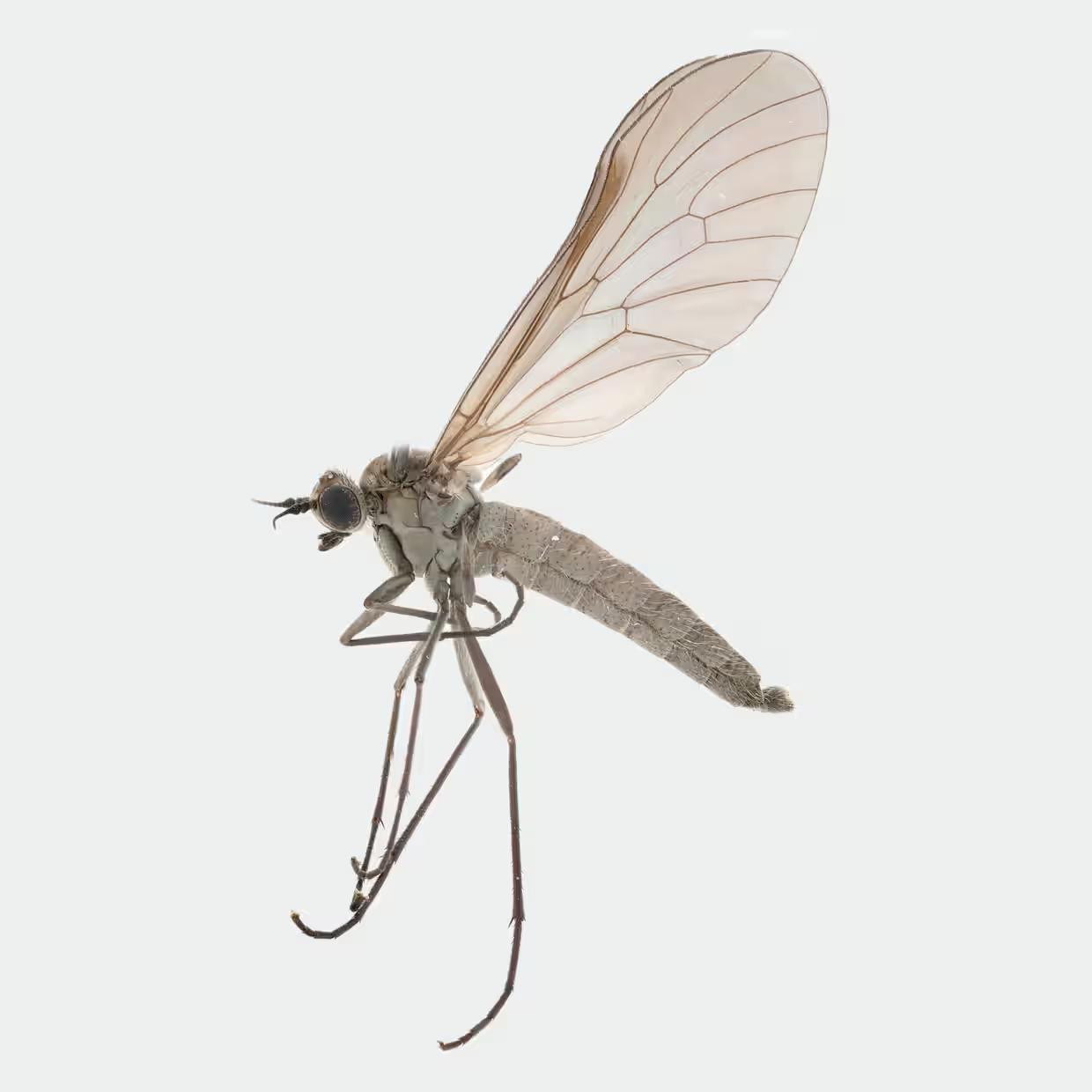According to The Guardian newspaper on September 14, two South African entomologists, John Midgley and Burgert Muller, made a trip to collect documents in Lesotho, the only country in the world whose entire territory is located at an altitude of more than 1,000 m.
Their journey began in December 2021 and ended at the Afriski mountain resort in western Lesotho. On their second day at the resort, which is at an altitude of more than 3,000 meters, Mr. Muller caught what they thought was a wingless moth – similar to those they had seen in other high-altitude areas.
However, upon closer examination that evening, Mr. Muller realized the animal was a fly.

Female specimen of Atherimorpha latipennis with degenerated wings. Photo: The Guardian
Using the equipment available, the two scientists identified the fly as belonging to the genus Atherimorpha. Interestingly, on the same day they caught 51 male specimens of Atherimorpha latipennis (a species of the genus Atherimorpha).
The species Atherimorpha latipennis was discovered in 1956, but females had never been described before. And similarities with the other 51 male specimens indicated that the female belonged to the same species Atherimorpha latipennis.
To be sure, the two scientists had to wait until Mr. Midgley returned to his workplace at the KwaZulu-Natal Museum in Pietermaritzburg City, South Africa, to consult more documents.

Mr. John Midgley collects documents in the Afriski mountains. Photo: The Guardian
Despite the female specimen’s strange morphology, its mouthparts and antennae were nearly identical to those of the collected males, allowing the two scientists to identify the specimen as Atherimorpha latipennis. The two decided against DNA testing for fear of damaging the only specimen they had.
Because there is no information about the life cycle of Atherimorpha latipennis, scientists can only speculate about why females lose the ability to fly.
Although flying has many benefits – such as moving faster and escaping predators – it takes time and effort to grow wings and also uses more energy to fly.
Mr Midgley believes the discovery of the flightless fly in Lesotho gives us a more complete picture of the animal kingdom. “Understanding the morphology of species with restricted ranges will help us predict how they will respond to environmental change,” he said.

Male specimen of Atherimorpha latipennis with useful wings. Photo: The Guardian
Source



![[Photo] Prime Minister Pham Minh Chinh chairs the meeting of the Government Party Committee Standing Committee](https://vphoto.vietnam.vn/thumb/1200x675/vietnam/resource/IMAGE/2025/8/23/8e94aa3d26424d1ab1528c3e4bbacc45)




![[Photo] General Secretary To Lam attends the 80th Anniversary of the Cultural Sector's Traditional Day](https://vphoto.vietnam.vn/thumb/1200x675/vietnam/resource/IMAGE/2025/8/23/7a88e6b58502490aa153adf8f0eec2b2)




















































































Comment (0)